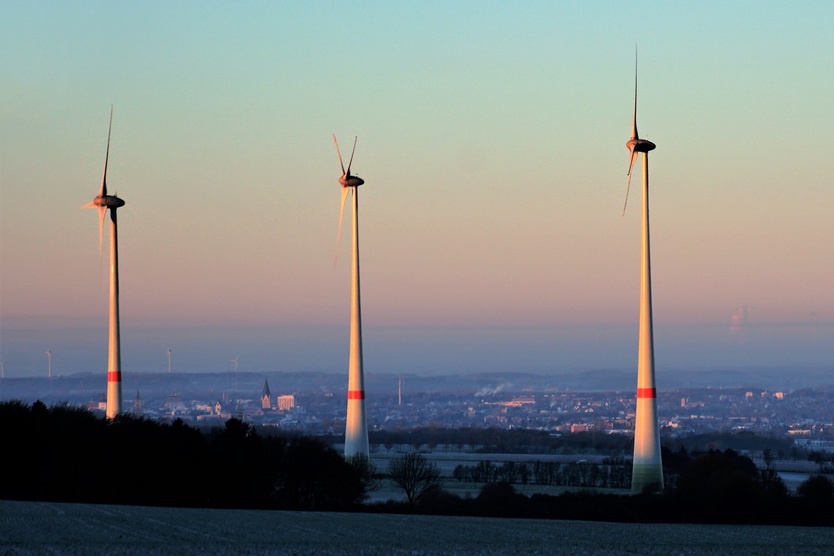
The Fraunhofer Institute (IOSB) has developed a measuring concept which uses Laser Doppler Vibrometry (LDV) to track unavoidable vibrations and monitor the behaviour of turbines.
© Heinrich Linse / pixelio.de
A new system for measuring the vibrations of wind turbines remotely could dramatically reduce the cost of maintaining the rotating giants and reducing downtime. The rotor blades and nacelle tower of a wind turbine can vibrate in normal wind speeds up to one metre. This vigorous shaking of the unit can loosen bolts and cause failures in the internal mechanisms, resulting in regular downtime as well as shortening service life.
Up until now, fixed sensors embedded in the turbines have been used to track these unavoidable vibrations and monitor the behaviour of the turbine. However, these measurements can only be taken at the points where the sensors were installed, which means they are not easy to maintain or replace. Furthermore, they cannot deliver a comprehensive picture of the vibration pattern of the whole plant.
To solve this not-inconsiderable problem for the wind industry, the Fraunhofer Institute for Optronics, Systems Engineering and Image Exploitation (IOSB) has developed an innovative measuring concept which uses Laser Doppler Vibrometry (LDV). Working with Berlin-based Nawrocki-Alpin GmbH as its field partner, the IOSB will install LDV laser modules at a distance of up to 300 metres away from the turbines, which are capable of recording the turbine vibrations with high spatial resolution.
An IT-based tracking system mounted on a pan-tilt head enables the laser beam to follow the movement of the rotor blades. Simultaneously, a camera captures multiple angles of the turbine in order to generate a virtual 3D model of the motion sequence. In this way, different measuring points on the blades can be controlled via the pan-tilt head. Equipped with this valuable field data, wind farm operators will be able to take specific measures to reduce downtime and limit damage in future.
The WEALyR research project is a follow-up to the WEADYN project (which filed a European patent for the technology in 2013) and has been supported by a grant from the Federal Ministry for Economics and Energy (BMWi).


